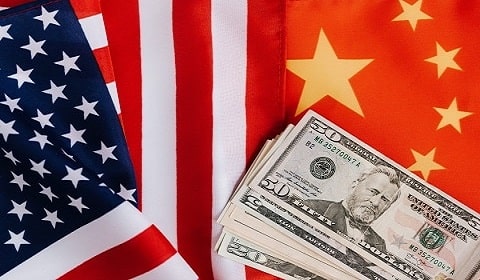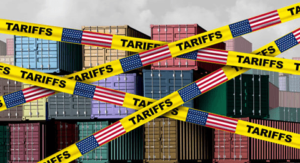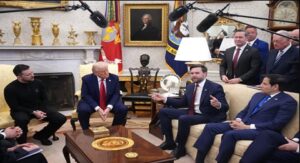
China Become a Superpower
China’s transformation into a global superpower is one of the most significant geopolitical shifts of the 21st century. From a largely agrarian economy in the late 20th century, China has rapidly ascended to become the world’s second-largest economy, a technological innovator, and a major player in international affairs.
China become a superpower this extraordinary journey is characterized by remarkable economic growth, strategic reforms, and ambitious foreign policy initiatives. To understand China’s ascent to superpower status, we must delve into the intricate interplay of economic prowess, diplomatic engagement, military modernization, and the statistical indicators that underscore this transformative process.
Here we are going to discuss about China become a superpower. The indicators we are taking into consideration are economic growth, trade, technological development, military power, and diplomatic engagement.
Table of Contents
China Become a Superpower
1. Economic Growth and Reform:
China’s remarkable economic growth has been a primary driver of its ascent to superpower status. Since the late 1970s, China has implemented economic reforms that opened up its markets, attracted foreign investments, and spurred domestic entrepreneurship. Deng Xiaoping’s “Reform and Opening Up” policy was a pivotal moment, leading to impressive GDP growth.
According to World Bank data, China’s GDP grew at an average rate of 9.8% between 1979 and 2019, transforming it into the world’s second-largest economy (World Bank, 2020). China Become a superpower This economic success has enabled China to invest in various sectors, from infrastructure to technology, thereby strengthening its global influence.
2. Trade and Exports:
China’s role as a global economic powerhouse, world’s factory, is underscored by its extensive international trade network. The World Trade Organization (WTO) reported that China became the world’s largest exporter in 2009, and it has maintained this position since then (WTO, 2020).
China became a superpower through its export-oriented growth strategy, combined with its vast workforce and manufacturing capabilities, allowing it to dominate global markets and become a central player in international trade. The country’s export-oriented growth strategy, combined with its vast workforce and manufacturing capabilities, has allowed it to dominate global markets, making it a central player in international trade.
China’s Belt and Road Initiative (BRI), launched in 2013, has further expanded its global economic footprint by financing and constructing infrastructure projects in partner countries.
3. Technological Advancements:
China’s investments in research and development (R&D) have led to significant technological advancements. The National Science Foundation noted that China overtook the United States as the world’s largest spender on R&D in 2019, spending $528.7 billion, a 10.7% increase from the previous year (NSF, 2021).
This investment has led to breakthroughs in areas like 5G technology, artificial intelligence, and space exploration, enhancing China’s global technological influence. Companies like Huawei and Alibaba have emerged as global technology giants, further cementing China’s position as a technological superpower.
Moreover, alongside technological advancements, China become a superpower, economic growth has propelled it, reshaping global trade and financial dynamics.
4. Military Modernization:
China’s military modernization efforts have been a key component of its superpower status. China became an economic superpower, evident in its remarkable growth and global economic influence.
The Stockholm International Peace Research Institute (SIPRI) reported that China increased its military spending by 76% between 2010 and 2019, making it the world’s second-largest spender on defense, just behind the United States (SIPRI, 2020).
This substantial investment has allowed China to develop advanced military capabilities, including a growing navy and missile systems. China’s assertiveness in the South China Sea and its expanding global military presence demonstrate its strategic ambitions.
5. Diplomacy and Multilateral Engagement:
China’s diplomatic engagement with international organizations and regional forums has been instrumental in its ascent as a superpower. It has actively sought to expand its influence through initiatives like the Asian Infrastructure Investment Bank (AIIB) and participation in the United Nations.
China’s Belt and Road Initiative has garnered support from numerous countries, allowing it to strengthen geopolitical diplomatic ties while advancing its economic interests. China’s role in addressing global challenges, such as climate change, has also bolstered its international image. Moreover, China’s emergence as a superpower has significantly reshaped global trade dynamics.
Conclusion:
China’s rise to superpower status is a product of its sustained economic growth, extensive global trade, technological advancements, military modernization, and proactive diplomacy. Statistical data from organizations like the World Bank, WTO, NSF, and SIPRI demonstrate the tangible progress made in these areas.
China became a superpower through strategic planning and persistent efforts, evident in its remarkable growth over recent decades. While China’s rise presents business opportunities for international cooperation, it also poses challenges, such as strategic competition and concerns over human rights. Understanding the factors and statistics behind China’s superpower status is essential for comprehending the evolving dynamics of the 21st-century global landscape.
China became a superpower not just through economic prowess but also through adept global engagement and policy formulation.





